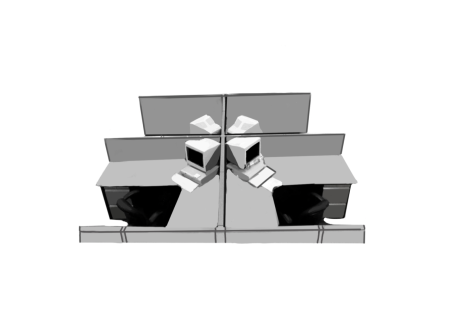The new standard: the detrimental effects of the 9-5 work life
May 6, 2023
Wake up at 8 a.m. to ensure you won’t be late for your shift that starts at 9 a.m. Make breakfast for the kids, placing a loving note in their lunchboxes to remind them of your existence. Make it home in time to kiss the kids goodnight, only to know that your presence in their life is somewhat determined by your paycheck. This dystopic view of adulthood has created concern and anxiety in Generation Z’s (Gen Z) mental and physical health. To combat this dread of future adulthood, high school students should explore and embrace their passions and interests by participating in various extra-curricular activities before planning their future careers.
Imagine days that stick together like glue, a constant cycle of sunrise and sunset with no differentiation. With the quiet breathing of your co-workers, you collect your breath, trying to escape an existential crisis. Eat, sleep, and breathe in your workplace as your former dreams crumble, killing the spirit of the seven
-year-old who had dreamed of becoming an astronaut. Young adults have now begun to see themselves spending their days in a cubicle rather than in a spaceship. You watch the clock hand spin until 5 p.m. arrives, only to wait in the car for the long duration of rush hour. You get into bed at 9 p.m. and dream of exciting adventures that create an insatiable craving for the creativity and purpose you traded in high school for the promise of financial success.
Since childhood, I have often considered my future and wondered how I can leave my mark on the world. I want those around me to remember me for the positive changes I made in their lives rather than for the “positivity I bring to the work table.” Sadly, my colorful childhood aspirations have grown to be covered by a black fog: “How will you make a living?” is the nagging question.
Attaining a high salary appears to be paramount in the minds of high school and college graduates, and sadly, often, what accompanies that goal is a high suicide rate. According to an article published by CBS in 2016, jobs for corporate managers and executives, advertising, and public relations result in the highest suicide rates, with approximately 20 suicides per 100,000 workers. This list of victims is followed by accountants, dentists, and others with 9-5 monotonous jobs.
Understandably, there are upsides to this repetitious work life. For example, the typical 9-5 routine offers solidarity and structure as well as a steady and secure financial source of income to provide an attractive lifestyle. Although a generous paycheck is tempting, it often deprives workers of a different form of wealth. In an article by Lane Goodwin, a mindset and motivation blogger, she implies that this soul-sucking cycle can become an inescapable prison when you acknowledge your static work position is stunting your ability to develop as a human being. The inability to grow from a 9-5 is similar to running on a

treadmill, as you put all your energy into a single movement. However, when you look down, you realize you haven’t moved from where you began. On your deathbed, do you want to admit you sacrificed your happiness and hobbies to work an unfulfilling life for money and structure, or would you rather acknowledge that you spent your life doing what made you happy, even when that included taking risks?
While 9-5 jobs are detrimental to one’s mental health, they can also be physically harmful. The University of Oxford conducted a study in the European Heart Journal examining the affiliations between long working hours and the risks of developing Atrial Fibrillation (AFIB). The results uncovered that those people working more than 55 hours a week were 40 percent more likely to develop AFIB regardless of underlying risk factors. This study demonstrates a direct correlation between excessive hours of repetitious work and abnormal heart rhythm. To remedy these possible mental and physical afflictions, it’s time for a call to action. It is time for students to reflect and carve out time for what stimulates and excites them. Rather than working a 9-5, alternatives exist such as music, acting, or being a virtual assistant. To promote the development of an outlet, it is time for Redwood to introduce new non-academic classes.
It is essential for high school students to consider their passions and interests when planning their future career paths. Rather than blindly following the traditional career path, high school students should explore alternative career paths that spark their curiosity beyond the world in which they live. Pursuing a career that offers personal fulfillment and meaning can help prevent the negative effects of overwork and can lead to a more satisfying and balanced lifestyle.























